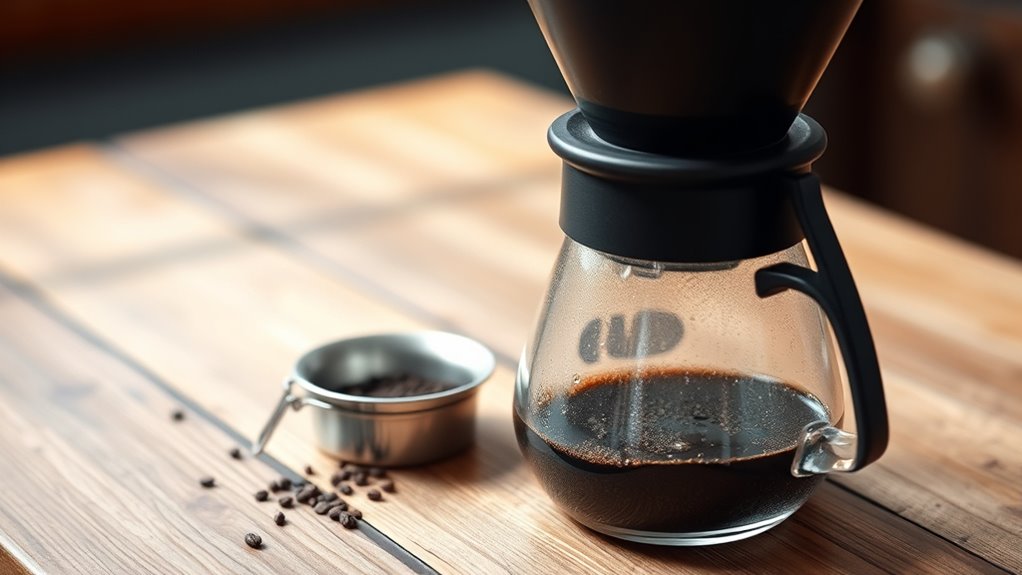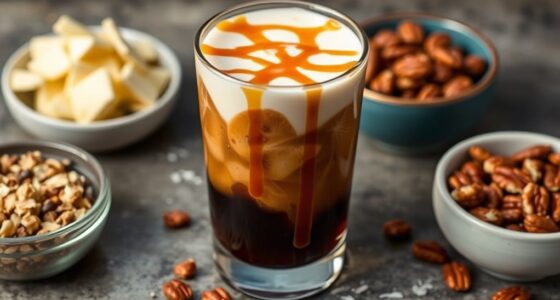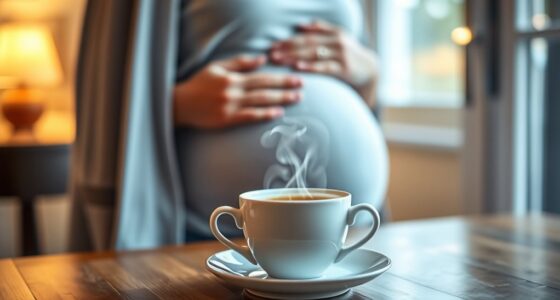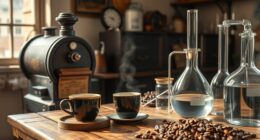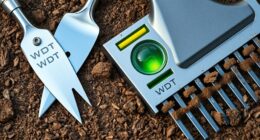To make cold brew at home or in your shop, you’ll need a brewing vessel like a mason jar, Toddy, or slow-drip system, along with filtration tools such as paper filters, cheesecloth, or filter baskets. You’ll also want accessories like timers or temperature controls for consistency. The equipment you choose influences flavor, clarity, and ease of use. Keep going to discover more tips on setting up the perfect cold brew station.
Key Takeaways
- Choose between immersion vessels or filtration systems based on your preferred flavor and clarity.
- Use proper filtration methods like paper filters or cheesecloth to achieve the desired brew clarity.
- Select equipment size and features suitable for your brewing volume and convenience needs.
- Regularly clean and maintain your equipment to ensure fresh, high-quality cold brew.
- Consider advanced options like slow-drip or nitro systems for specialized flavors and presentation styles.
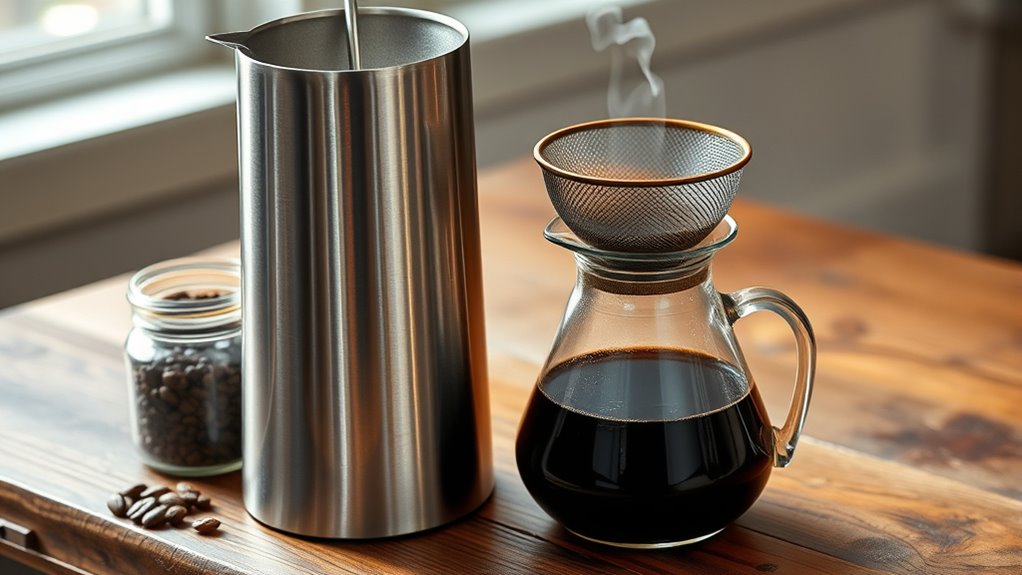
Cold brew equipment includes a variety of vessels and devices designed for immersive or filtered brewing. Whether you’re using simple cold brew devices like mason jars, specialized systems such as Toddy or Hario Mizudashi, or more advanced brewing equipment, your goal is to extract smooth, rich coffee by steeping coffee grounds in water over an extended period. These vessels are often sealable, making them perfect for cold brewing in the refrigerator. The choice of equipment influences how you filter the brew, with options ranging from paper filters for a clean, clear cold brew concentrate to cheesecloth for a fuller, more textured drink. When brewing, the key factor is the brew ratio—how much coffee grounds you use relative to water. Full immersion brewers typically create a concentrated cold brew that needs to be diluted before serving. For instance, with a Toddy system or a mason jar setup, you add coffee grounds to water, stir, and let the mixture steep for 12 to 24 hours. The resulting cold brew concentrate can be stored in the refrigerator and mixed with water, milk, or a milk alternative to suit your taste. On the other hand, filter-basket models, like the Hario Mizudashi, streamline the process by using a filter basket that holds the coffee grounds and allows water to pass through gradually, simplifying filtration and reducing sediment. It’s essential to regularly clean and sanitize your brewing equipment to prevent bacterial growth and preserve flavor quality. This is especially important if you’re using equipment like filter baskets or vessels with narrow openings. Proper cleaning also extends the lifespan of your devices and ensures each brew tastes fresh and vibrant. Some advanced brewing equipment, such as slow-drip systems or nitro cold brew machines, offer varied brewing times and presentation styles, providing a range of flavor profiles and textures. Additionally, understanding the importance of temperature control can help optimize extraction and flavor. Ultimately, your choice of cold brew devices and brewing setup depends on your preferences for flavor, clarity, and convenience. You can opt for straightforward immersion vessels for rich, concentrated brews or select filter-based systems for clarity and ease of use. The right equipment makes a significant difference in the final product, enabling you to craft cold brew that’s perfectly tailored to your taste. Whether you’re a beginner or a seasoned barista, selecting appropriate brewing equipment ensures you get the most out of your cold brewing process every time.
Frequently Asked Questions
What Equipment Do You Need to Make Cold Brew?
You need a few key items to make cold brew. First, choose a sealable vessel like a mason jar or Toddy system to steep your coffee. Use coarsely ground coffee, around 100-125 grams per liter of water, and a filter such as a paper filter or cheesecloth to strain out grounds.
A medium-coarse grind and a fine mesh strainer help guarantee a smooth, flavorful cold brew.
Is It Cheaper to Make Your Own Cold Brew?
Yes, making your own cold brew is usually cheaper than buying it pre-made. You’ll spend a small amount on equipment upfront, but it pays off after brewing just a few gallons.
Over time, your per-serving cost drops by 50-70%, saving you money compared to store-bought bottles or concentrates. Plus, you get to enjoy fresh, customized cold brew whenever you want without the extra expense.
Is It Okay to Drink Cold Brew Every Day?
You can drink cold brew every day, but you should do so in moderation. While it’s low in acidity and packed with antioxidants, it also contains a high amount of caffeine—about 200-300 mg per 12 oz.
Too much caffeine might cause sleep issues or jitters. Balance your intake with water and other drinks, and keep an eye on your overall caffeine consumption to enjoy cold brew safely daily.
Is a Burr Grinder Necessary for Cold Brew?
You might wonder if a burr grinder is necessary for cold brew. While it’s not mandatory, using one really improves your results.
A burr grinder gives you a consistent, coarse grind, which helps extract flavors evenly and reduces sediment. With precise control over grind size, you can tweak your cold brew’s strength and clarity.
Conclusion
Now that you know what cold brew equipment you need, you’re ready to start brewing your perfect cup. With the right tools, you can enjoy smooth, rich coffee anytime. Just gather your grinder, filter, pitcher, and storage container, and you’re all set. Don’t forget to experiment a little to find your ideal strength and flavor. Cheers to delicious cold brew at home—happy brewing!
